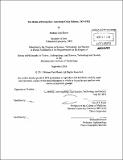| dc.contributor.advisor | David S. Jones. | en_US |
| dc.contributor.author | Rossi, Michael Paul, Ph. D. Massachusetts Institute of Technology | en_US |
| dc.contributor.other | Massachusetts Institute of Technology. Program in Science, Technology and Society. | en_US |
| dc.date.accessioned | 2012-02-29T17:28:16Z | |
| dc.date.available | 2012-02-29T17:28:16Z | |
| dc.date.copyright | 2011 | en_US |
| dc.date.issued | 2011 | en_US |
| dc.identifier.uri | http://hdl.handle.net/1721.1/69452 | |
| dc.description | Thesis (Ph. D. in History, Anthropology, and Science, Technology and Society (HASTS))--Massachusetts Institute of Technology, Program in Science, Technology and Society, 2011. | en_US |
| dc.description | Cataloged from PDF version of thesis. | en_US |
| dc.description | Includes bibliographical references (p. 365-389). | en_US |
| dc.description.abstract | Although vision was seldom studied in Antebellum America, color and color perception became a critical field of scientific inquiry in the United States during the Gilded Age and progressive era. Through a historical investigation of color science in the United States in the late nineteenth and early twentieth centuries, I argue that attempts to scientifically measure, define, and regulate color were part of a wider program to construct a more rational, harmonious, and efficient American polity starting from one of the very baseline perceptual components of reality - the experience of color. As part of this program, I argue secondly that color science was as much a matter of prescription as description - that is, color scientists didn't simply endeavor to reveal the facts of perception and apply them to social problems, they wanted to train everyday citizens to see scientifically, and thereby create citizens whose eyes, bodies, and minds were both medically healthy and morally tuned to the needs of the modern American nation. Finally, I argue not simply that perception has a history - i.e. that perceptual practices change over time, and that, for Americans of a century ago, experiences of color sensations were not taken as given but had to be laboriously crafted - but also that this history weighs heavily upon our present day understanding of visual reality, as manifested not least of all in scientific studies of vision, language, and cognition. Employing a close reading of the archival and published sources of a range of actors including physicist Ogden Rood, semiotician Charles Peirce, logician Christine Ladd-Franklin, board game magnate Milton Bradley, and art professor Alfred Munsell, among others, this study reveals the origins of some of the most deeply-rooted conceptions of color in modern American culture. | en_US |
| dc.description.statementofresponsibility | by Michael Paul Rossi. | en_US |
| dc.format.extent | 389 p. | en_US |
| dc.language.iso | eng | en_US |
| dc.publisher | Massachusetts Institute of Technology | en_US |
| dc.rights | M.I.T. theses are protected by
copyright. They may be viewed from this source for any purpose, but
reproduction or distribution in any format is prohibited without written
permission. See provided URL for inquiries about permission. | en_US |
| dc.rights.uri | http://dspace.mit.edu/handle/1721.1/7582 | en_US |
| dc.subject | Program in Science, Technology and Society. | en_US |
| dc.title | The rules of perception : American color science, 1831-1931 | en_US |
| dc.title.alternative | American color science, 1831-1931 | en_US |
| dc.type | Thesis | en_US |
| dc.description.degree | Ph.D.in History, Anthropology, and Science, Technology and Society (HASTS | en_US |
| dc.contributor.department | Massachusetts Institute of Technology. Program in Science, Technology and Society | |
| dc.identifier.oclc | 774888519 | en_US |
